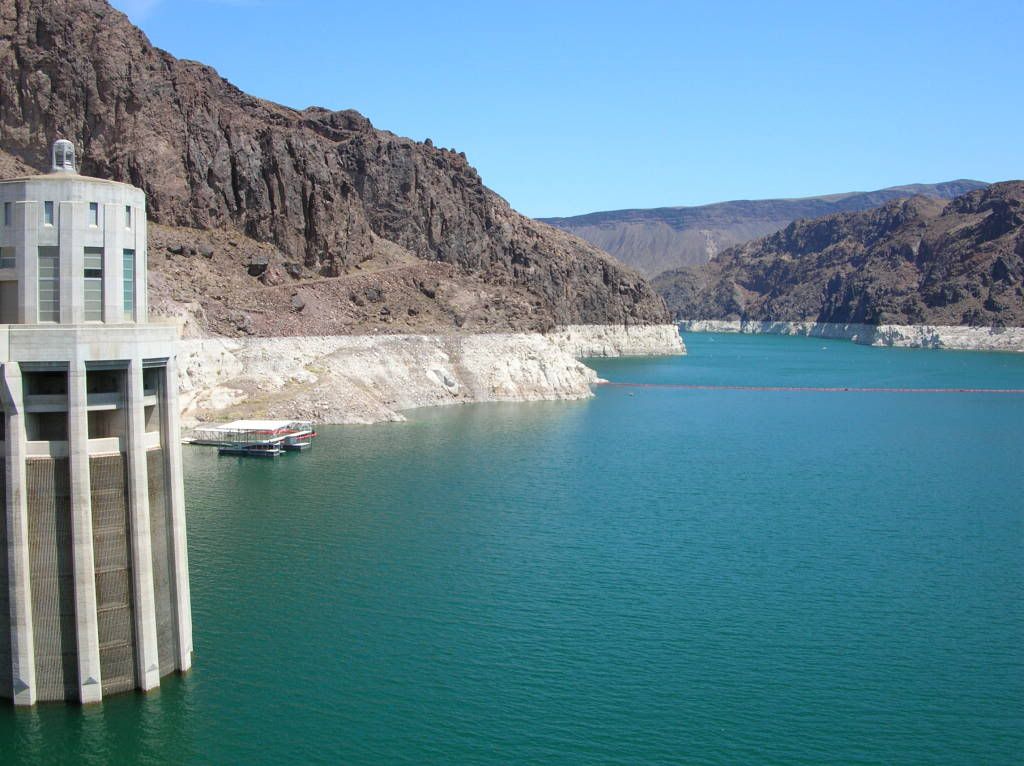LAS VEGAS is in a very similar drought to the Atlanta crisis of Summer 2007— The Southern Nevada Water Authority (SNWA) has said that if drought conditions continue, the city of Las Vegas could be out of water, according to a February 11 lasvegasnow.com news report .
Pat Mulroy, the head of the SNWA, told Nevada lawmakers on Wednesday that extended drought conditions could potentially impact the water authority’s ability to use its current two intakes on Lake Mead- the huge reservoir behind the Hoover Dam in the Colorado River that supplies Las Vegas and other metropolitan areas such as Phoenix and Los Angeles.
Scientists agree that the supply is dwindling, but there has not yet been a consensus as to when the supply will run dry: Mulroy told lawmakers, “If the drought continues another two years, we lose our second intake. At this point, Southern Nevada loses 90 percent of its water supply.”
An SNWA spokesman later sent a correction to what Mulroy told lawmakers, saying it will take six years, rather than two years, for the continued drought to render the second intake useless.
This should once again remind those who have been paying attention to the Atlanta crisis of the inconsistent statements from all the experts regarding Lanier's status. At one point, it was said that Lanier had less than 90 day's supply, but that report was quickly withdrawn.
Pat Mulroy, the head of the SNWA, told Nevada lawmakers on Wednesday that extended drought conditions could potentially impact the water authority’s ability to use its current two intakes on Lake Mead- the huge reservoir behind the Hoover Dam in the Colorado River that supplies Las Vegas and other metropolitan areas such as Phoenix and Los Angeles.
Scientists agree that the supply is dwindling, but there has not yet been a consensus as to when the supply will run dry: Mulroy told lawmakers, “If the drought continues another two years, we lose our second intake. At this point, Southern Nevada loses 90 percent of its water supply.”
An SNWA spokesman later sent a correction to what Mulroy told lawmakers, saying it will take six years, rather than two years, for the continued drought to render the second intake useless.
This should once again remind those who have been paying attention to the Atlanta crisis of the inconsistent statements from all the experts regarding Lanier's status. At one point, it was said that Lanier had less than 90 day's supply, but that report was quickly withdrawn.
Be it 2 years or 6, Nevada needs to take a hard look at its water use plan and decide, like Georgia, to be proactive.
Our own Regional Water Commissions, though potentially wrought with problems all their own, is at least charged with developing a Comprehensive Water Plan for our state.
According to a recent USA Today Article, There is a 50% chance Lake Mead will run dry by 2021 and a 10% chance it will run out of usable water by 2014, if the drought deepens and water use climbs, researchers said.
The SNWA has begun a $1 billion project to build a third intake that extends deeper into the lake. According to Mulroy, the financial situation surrounding this project “couldn’t be more precarious.” as infrastructure funding is dropping off-
Water conservation efforts, as well as the home foreclosure crisis, have slashed the amount paid by water customers, and sales of public land for capital projects also have all but ended. In addition, sales tax revenues have dropped.
SNWA's entire coffers will be required just to complete the current third intake project, Mulroy said.
Where will that leave the rest of Vegas's infrastructure? And what would happen if further projected revenues are not realized?



No comments:
Post a Comment